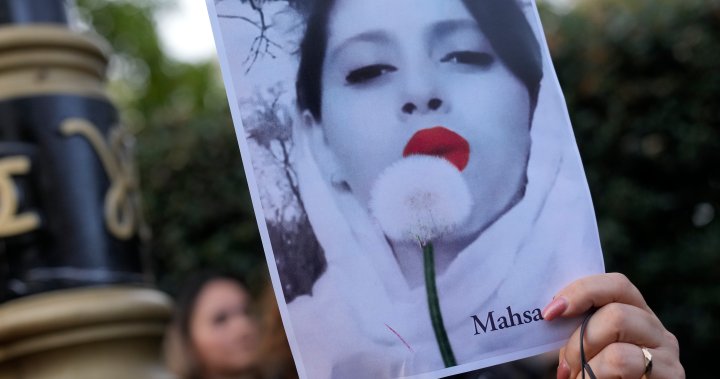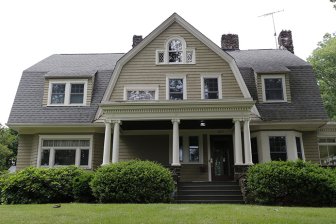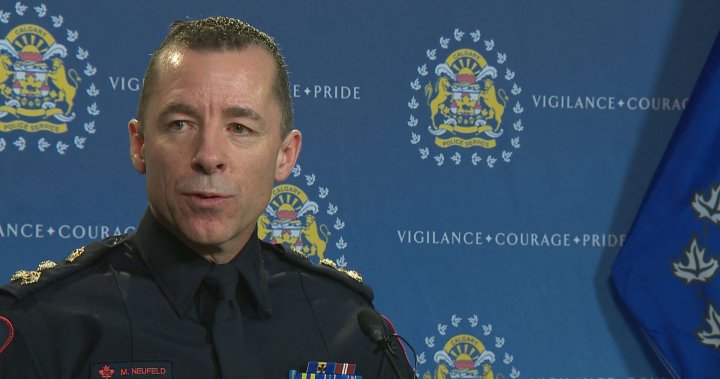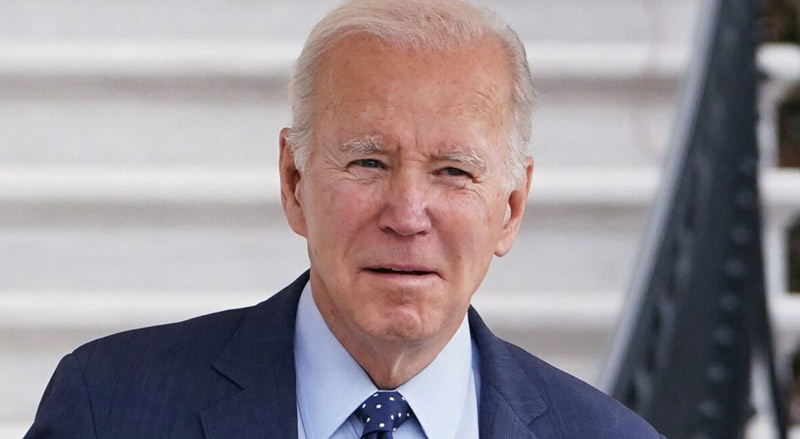1 month after Mahsa Amini’s death in Iran, what has Canada done so far? – National
It has been one month since the death of Mahsa Amini, but protests across Iran and around the world have shown no signs of slowing.
There have been several demonstrations in Canada and the federal government has announced a number of sanctions against the Iranian regime, but some say more still needs to be done to hold them accountable.
“What happened to her struck a chord with all Iranians, myself included, because it could have happened to any one of us,” Goldie Ghamari, MPP for the Carleton riding in Ottawa, told Global News.
“Although I didn’t know her personally, Mahsa was my sister, my cousin — she was one of us.”
Read more:
Canada to designate Iranian regime as serial human rights violator: ministers
-
![]()
Canada to designate Iranian regime as serial human rights violator: ministers
Amini, a 22-year-old Kurdish-Iranian woman, died after falling into a coma while in the custody of Iran’s “morality police” on Sept. 16. She was being held for not wearing her hijab properly, labeled as “inappropriate attire,” according to the rigidly enforced Islamic Penal Code.
She was detained three days earlier in the country’s capital of Tehran.
Police said she suffered a heart attack after being taken to a station to be “educated.” Her family denied her having any heart problems and her father later said she had bruises on her legs, holding the police responsible for her death.
The demonstrations over Amini’s death have become one of the greatest challenges to Iran’s theocracy since the country’s Green Movement protests in 2009, when Iranians rallied against the presidential election that year. At that time, the brutality of the regime was symbolized by the killing of young Neda Agha-Soltan, who was shot during a protest.
As demonstrations continue to persist following Amini’s death, human rights groups say more than 200 people have been killed in the crackdown nationwide, including teenage girls.
Amnesty International said at least 23 children have died.
Demonstrators have included oil workers, high school students and women marching without their mandatory headscarf, or hijab.
Strands of hair lie on the ground after women cut their hair during a protest against the death of Iranian Mahsa Amini, in Istanbul, Turkey, Sunday, Oct. 2, 2022. As anti-government protests roil cities and towns in Iran for a fourth week, sparked by the death of the 22-year-old woman detained by Iran’s morality police, tens of thousands of Iranians living abroad have marched on the streets of Europe, North America and beyond in support of what many believe to be a watershed moment for their home country.
(AP Photo/Emrah Gurel, File)
What has Canada done so far?
Since Amini’s death, Canada has permanently banned more than half — over 10,000 members — of the Islamic Revolutionary Guard Corps (IRGC) from entering the country.
Federal cabinet ministers also announced last week that Canada is using a “powerful and sparingly” used provision under the Immigrations and Refugees Protections Act to designate the entirety of the Iranian regime as an entity that is a “serial violator of human rights” and one that commits acts of terror.
Minister of Public Safety Marco Mendicino said the Iranian regime must be held accountable, noting the Canadian government is ensuring that anyone responsible for “these egregious human rights violations” will never be allowed to come to Canada again.
Last week, Foreign Affairs Minister Melanie Joly announced Canada would also add more Iranian officials and entities to the sanction list.
The measure will mean 17 individuals and three entities will be barred from entering Canada or doing business with most Canadian firms.

Canada formally bans more than 10k Iranian revolutionary guard members from entry
According to Joly, the sanctions are targeted at Iranian officials who have committed or enabled human rights violations against women or have perpetuated disinformation.
The list includes Iran’s longtime foreign minister Mohammad Javad Zarif and Saeed Mortazavi, the prosecutor who ordered the torture of Zahra Kazemi, an Iranian Canadian journalist who died in custody in 2003.
Those listed will have their Canadian-held assets frozen, as Ottawa works to put a new law into action to seize those assets and instead disperse them to victims and human rights defenders.
Ottawa has also pledged $76 million to enforce new sanctions against Iranian officials.
Mendicino said last week this would involve hiring 30 new people as either RCMP officers or public servants within weeks.
For some, this isn’t enough.
“Iranian-Canadians want more,” said Ghamari.
“What I’m hearing when people find out that I’m a politician is that they want Canada to recognize and acknowledge that the Islamic Revolutionary Guard Corps is a terrorist entity.”
Ghamari has attended a number of Canadian demonstrations since Amini’s death. The first, a small vigil of only around 100, was just two days after Amini had died.
“It was very sad and solemn,” Ghamari said.
But as rallies continued, Ghamari noticed the support grew by the thousands and the atmosphere changed.
The Freedom Rally for Iran, in support of Mahsa Amini, continues into the evening at Mel Lastman Square in Toronto, Ontario on October 1, 2022.
THE CANADIAN PRESS IMAGES/Dominic Chan
“People are angry, people are loud. People are demanding justice, demanding action. It’s not about a compulsory hijab anymore. It’s about freedom and democracy. This is a revolution,” she said.
“Iranian-Canadians, we are ethnically diverse, culturally diverse, religiously diverse and politically diverse, but there’s one thing that unites us and that’s our love and desire for a free and democratic Iran.”
The 2016 census suggests there are about 210,405 Iranians in Canada, with 169,485 identifying themselves as having been born outside Canada. The largest group of immigrants arrived between 2001 to 2010.
“I think the only way that Iranians can see better days is with the complete removal of this regime,” Ashkan Etemadi, an Iranian-Canadian living in Toronto, told Global News, noting he’d also like to see the IRGC listed as a terrorist organization in Canada.
“There is a crisis going on inside Iran right now. People are being massacred on the streets and Canada does need to do more,” he said.
On Friday, Supreme Leader Ayatollah Ali Khamenei said no one should dare think they can uproot the Islamic Republic, his toughest warning yet to protesters.
“It’s passed a point of no return for the regime. There is an ongoing revolution and the Islamic Republic’s days are numbered,” said Etemadi.
–With files from The Canadian Press & Reuters









